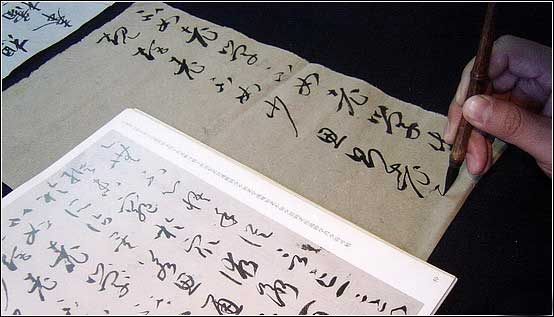1. About the choice of pen and paper
1. Pen: Use Jianhao for large characters and Langhao for small characters.
2. Paper:
(1) Use raw xuan for large characters and half-cooked xuan for small characters. It is not recommended to use cooked xuan to create calligraphy works.
(2) The handmade raw edge paper is made of pure bamboo material. The paper is half-cooked and dried naturally. It has the advantages of water absorption, good tensile strength, flexibility, and no wrinkles when the ink dries. It is very suitable for practicing calligraphy.
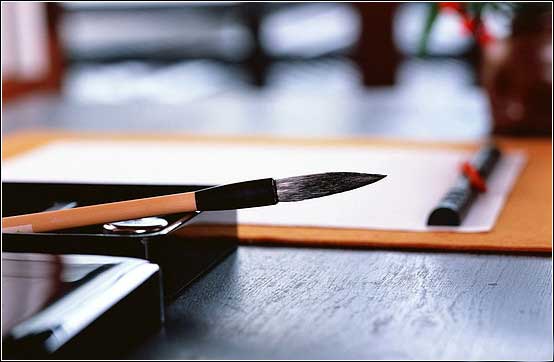
2. About the practice of small regular script
1. When studying "Declaration Form", you should grasp its artistic features such as its large and clumsy fonts, quaint and simple dot paintings, and its clear and simple charm. Use the pen to fall lightly and draw it back gently, and take the horizontal momentum of the structure. The key is to grasp the overall characteristics of Xiaokai, which is "sparse, clear, even, wide and wide enough".
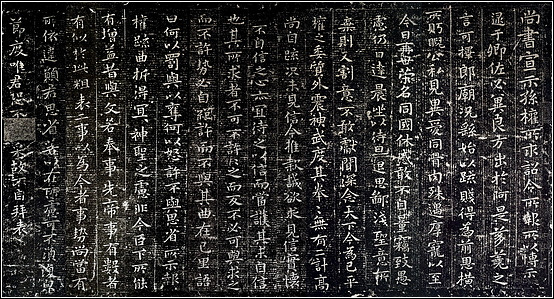
2. Small regular script generally belongs to Tie Xue. If we can take into account the style of writing in the Han and Wei dynasties and the straightforwardness of Dunhuang sutra writing, it will increase the meaning of the writing style.
3. The writing style of small regular script is particularly exquisite, which requires that the contradictory unity of "clear" and "fat" be properly handled. "Qing" means that the ink is not loose and the hair is sharp; "Fu" means that the writing style is subtle and the writing force is plump. If it is also clear and plump, the bones and blood will be warm and moist, mellow and harmonious, and it can be considered the ancients. If you want small characters to have a grand atmosphere, you must emphasize the style of ink. It must be heavy and heavy, and the key points and strokes must be clear to write new ideas.
4. To achieve "small characters should be like big characters", in addition to writing in a clear, even and wide manner, as Mr. Gao Ershi said, small characters should have more ink, the handwriting should be clear, and if there is a hair, it should be written in all directions. All ink.
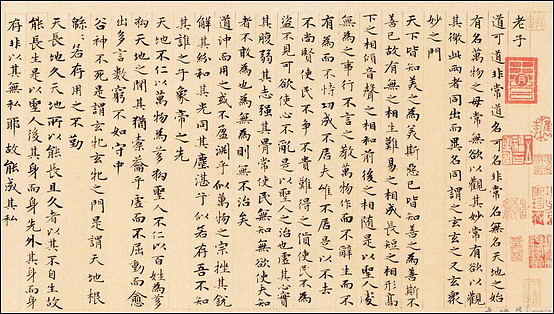
5. Small regular script and large regular script are very different. Large regular script starts with the stipple requirements, while small regular script focuses on knotting. Small regular script is so small that the direction of each stroke and the distance between strokes are sometimes not spaced. It is not easy to require each stroke to have a posture. If you want to make many changes in strokes, wrist movement is important. Mr. Gao Ershi said, "Small regular script is also purely about movement of the wrist. Once fingering is involved, it cannot be achieved." Therefore, when practicing, you should strive to improve your wrist movement, make the ups and downs clear, and try your best to control the technique of not fake fingering.
6. Small characters and large characters are completely different and cannot be regarded as enlargement or reduction of each other. Large characters are easy to be indulged in. If they are excessive or blindly indulged, they will become frivolous and loose, without the interest of profoundness and calmness. Therefore, large characters should be placed in the middle and restrained; It will also be lost due to lightness, so small characters should be restrained but released. It can be seen from this that there is a qualitative difference between the two and should be carefully considered when writing.
3. Regarding the writing of the main book
1. If you like big characters, you can learn Yan style "Qinli Stele" or Wei Stele, such as "Zhang Menglong", "Yang Dayan", "Zheng Wengong Stele", etc.
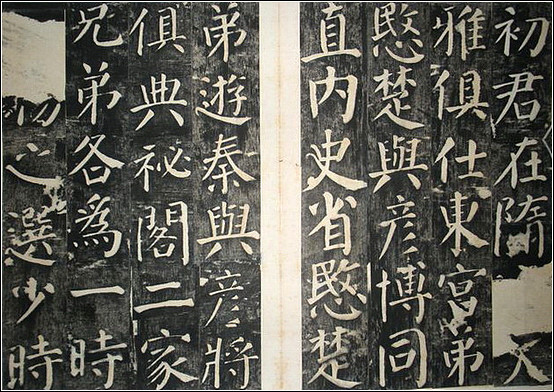
2. When studying "Zhang Qian Stele", you should pay attention to the natural and smooth strokes of the pen (stippling) and try to avoid trembling and affectation. To see the edge of the pen through the edge of the knife, there is no need to deliberately pursue the effect that appears due to the erosion of the lines and edges of the knife over time.
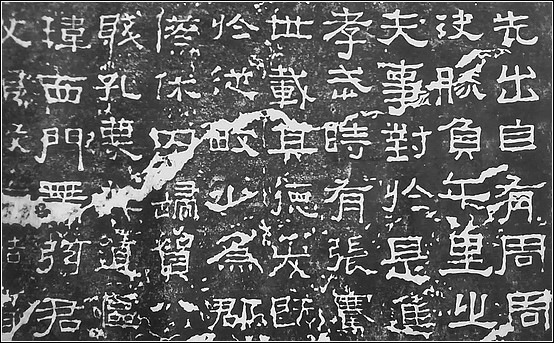
3. Zhiyong's regular script "Thousand Character Classic" has always been considered to be a unique and better copying model. During the practice, one can be familiar with both regular script and cursive script. The practice of regular script will automatically integrate the emotional nature of the cursive script. It has the effect of killing two birds with one stone.
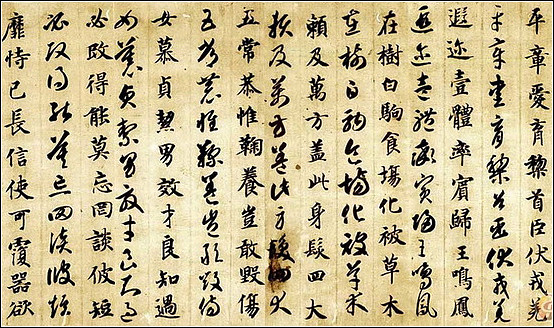
4. Practice of official script
We mainly take "Cao Quan Stele" as an example. It is not easy to write the feminine beauty characterized by mellowness, relaxation, elegance and elegance when studying "Cao Quan". The folding method of this post is mainly round transfer pen, and some of the pens are broken but the meaning is connected. Specifically speaking, most of the brush strokes are made by turning from inside to dark, and the wave painting is done by rising and dragging backwards and forwards in the middle to make an arc-shaped tip, rather than folding the pen and applying it sideways.
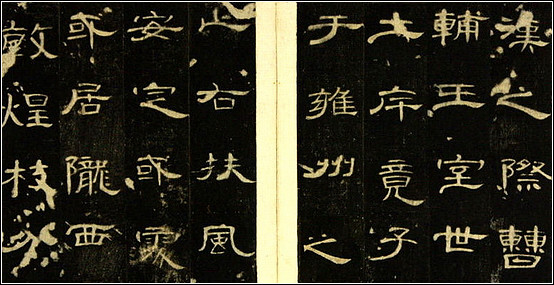
5. About the practice of running script
1. When learning running script, it is advisable to copy the Preface to the Holy Teachings. It is necessary to grasp the artistic style and characteristics of this post, such as the smooth and elegant brushwork, the graceful and graceful writing style, the gentle and light breath, etc. The pen is tucked and convergent, the lines are thin, hard and strong, the combination of stipples, the radicals, and The silk threads, the strokes and the character movements are pure and natural. In the meantime, pay attention to correcting common problems such as slow and weak lines, such as weak bones, poor Qi, and sluggish ink. On the basis of Tonglin, it is necessary to fight a tough battle and pass the test word by word from aspects such as font type, font style, pen shape, stroke style and thickness contrast of strokes, ink color changes (refer to Lanting ink), etc. You need to work hard on memorizing fonts to achieve the proficiency of finding something in your pocket when creating works. The real level of a piece of work, or even the difference between an expert and an amateur in calligraphy, often depends on the smallest details. This is the so-called "the fiber is turned back, and the slightest hair is dead or alive". Therefore, when writing, you must pay special attention to details, including the position of strokes, the combination of thickness and length, the size of glyphs, the shade of ink, the relationship between strokes and glyphs, and the correspondence relationship, etc. Don't let go of even subtle changes in order to train and improve own eyesight. With the foundation of "Holy Teaching Preface", it will be much easier to learn "Lanting Preface", focusing on learning the composition, Qi and subtleties; then study Wang's Notes and learn how Wang Xizhi gave shape to characters and emotions. Plan and so on.
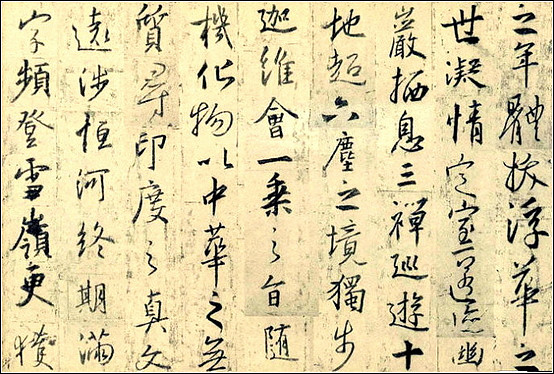
2. In a sense, writing a calligraphy is the sum of the understanding and skill of the person writing the calligraphy. When copying a post, you must adhere to the combination of reading, copying, and copying. Read to get the interest. Through reading, you can deeply imprint the points, paintings, structure, momentum, structure and other characteristics in the model into your mind; copy to get the shape and the meaning of the words. The charm cannot be separated from the structure. On the basis of reading, you must concentrate on the handwriting and memorize the various fonts. Once you get the meaning, after two steps of hard work, you will be like a fish in water in this step. My own accumulation leads to quasi-creation.
3. Learning about the penetration of "qi" and the generation of "momentum" is of course related to the level of proficiency, but the key is to have this concept. Whether it is "reading", "linting" or "creating", whether you have this concept is It is quite different. You can find discussions on this aspect in ancient and modern treatises and read them carefully to understand.
4. Huang Tingjian's running calligraphy strokes are vertical and horizontal, with open stipples. Although it has a radiating structure, it is not loose; the body posture is slanted, but it does not tip over. "Songfeng Pavilion Poetry Volume" is his masterpiece in his later years, which fully reflects the above characteristics. When writing, you need to pay attention to the connotative beauty of "something in the pen" that Huang pursues, or the "qi and charm" that complement each other.
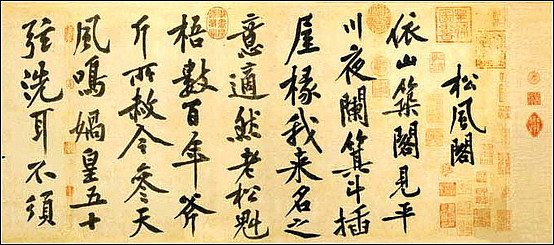
5、学行书选择米芾《蜀素贴》起步还是比较高的。要临好此帖,首先要对米芾书法的总体特点有所了解,牢牢把握住此帖的艺术特点,然后对其用笔、结构、章法及墨法等,都要一一仔细研究,特别是用笔的特点更要细究、掌握、记熟、会用,改变自己的用笔习惯;对字型要背下来,达到创作时能熟练运用的程度,切忌只临个大概。米芾腕力充沛,笔锋诡异,笔致滋润华丽,非常讲究笔力和笔势。力倚势所生,势因力而彰,因此骨力遒婉,笔势酣畅。
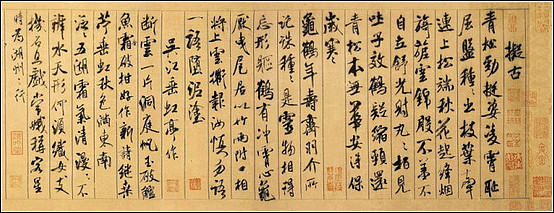
六、关于草书的临习
1、草书分为两类:一是章草,即隶之草;二是今草,即楷之草,理当与行书属同一层次。狂草属今草,若行书为“走”的话,小草即为“跑”,狂草就是“狂奔”。目前时尚走走、跑跑的行草,也是一种风格。习草要有一定的正体基础,因为草出于正(篆、隶)书,同时草兼各体的美学素质。草书从字法到笔法结构都有严格的要求,只有由浅入深、由易到难、由平正入险绝,循序渐进,并经过长期的字法和技法训练,才能真正掌握和学好这门艺术。主攻大草应从小草做起,可先习王羲之《十七帖》、智永或怀素《千字文》、孙过庭《书谱》。因为各种风格的大草均是以小草为基础的,有了一定小草基础就可选择符合自己审美观念的大草作品作为自己临习范本。由于草书的意多于法,载情性特强,因此习草还需注意字外功夫。因为书写者往往在瞬间挥洒中下意识地将自己审美、修养、情绪表现出来,所谓“书如其人”此时表现得最为充分,故习草更需提高艺术修养。
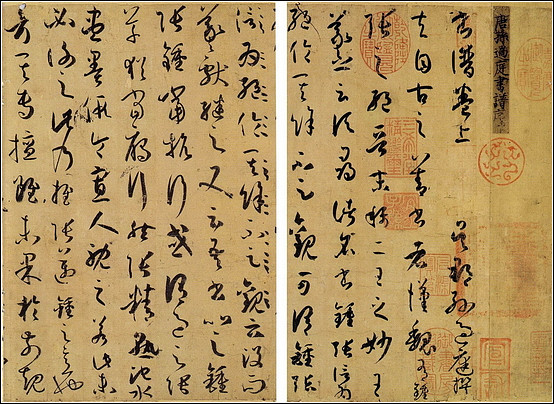
2、王羲之楷法师承钟繇,草书则上溯张芝。其《十七帖》是以真书笔法写草书,作草如真,故其笔致遒媚,结构精严,看似简单,下笔后方知其难。为此建议:一是以1比1或略大一点进行临习,这样便于在校帖中对照找差距,及时改正,不重犯错误;二是对工具笔墨纸张要考究,以达到原帖效果为标准。笔以用硬毫或兼毫为宜,纸可用元书纸或半生不熟的洒金宣等;三是认真学习有关此帖艺术特色的介绍文章和资料等,使自己对此帖用笔、结字、章法、情趣等技术和艺术特点有一个深刻了解和把握;四是察之尚精,拟之贵似。细节是艺术的生命。在对每一个细节(如用笔的起、行、收等)进行分析研究的过程中,要善于发现别人所没有发现的东西,并收于自己的笔下。
3、《书谱》字数多成草轨迹鲜明,易于循其法绳。临习《书谱》应将俊逸潇洒,峻拔钢断的用笔,纵横畅达、遒婉坚劲的笔势表现出来,特别是在用笔上的中侧并用、提按分明、顿挫有度所产生的质感和节奏的“蛀虫效果”,尤为精妙。先攻《书谱》,其他就可先放一放,应集中精力认认真真地去临写,暂不必求数量,以准确精到为标准,可以选择有代表性、认为精彩的几个字或几行字,从笔形笔势、字型字势等分析透、理解深,并能用自己的笔将所认识到的风格特征惟妙惟肖地表现出来。这样举一反三,触类旁通,扩大量的积累,直至全帖精熟,能随便择文书写,便可得原帖之八九,至此肯定会在书艺上有较大提高。此时不要担心个性不强,只要有了这个根基,就会有目的地选择其他经典,有选择地吸取能完善丰富此类风格的营养,久而久之必可使自己的作品既深具传统意趣,又较为明显地表现出自己的个性来。
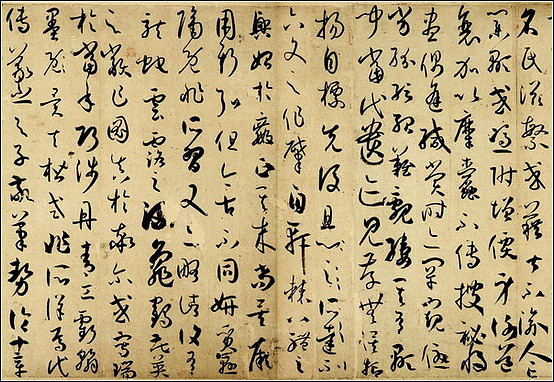
4、《书谱》上手后再临习《十七帖》,此帖通篇务求便捷,几无赘笔臃画,洗练明洁,其他或以后诸家大草、狂草不过都是在此基础上的纵横发挥。在此基础上再临怀素《自叙帖》及黄庭坚《太白忆旧游诗》。怀素草书奔放之极而不失绳规,黄的草书增益“点”法。有了这些基础再涉猎各家,不妨都过过手,把他们的长处收入手底,为以后创作打下基础。
5、临习怀素《自叙帖》,对该帖清健的笔姿、瘦劲的笔调表现出的圆转矫健的线条,以及奔放流畅的体势和恣意放纵的布局等都要有所体现。此帖自始至终以中锋出之,力贯始终,滞流失度、提按有致所产生的笃实、遒健的线条力感,也都要表现出来。
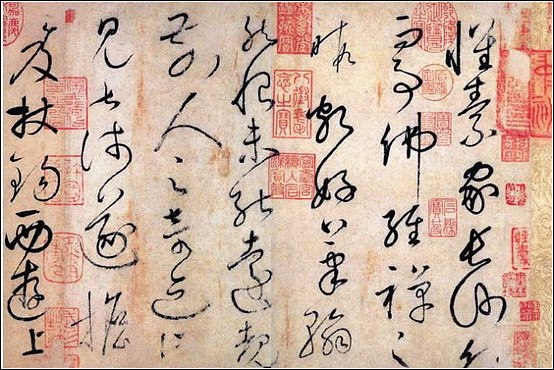
6、张旭《古诗四帖》(学术界有争议)与《肚痛贴》都是其代表作,较怀素《自叙帖》点画较粗,且有转有折、有提有按,中侧并施,笔势雄强纵逸,布白虚实相生的节奏感强。有同学临习中字法与笔法、构图等都有欠妥之处,笔法有的地方交待不清,有的不到位,有的又过了,中侧锋转换不自然,线条不够笃实,章法不顺畅,有顶牛和断气现象,揖让关系处理得不好等等。
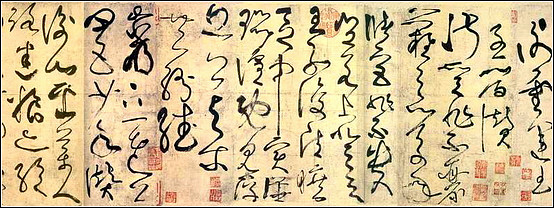
7、草书创作要有一定的气势,字法准确,用笔大胆,敢于放开写,并注意墨色变化,过渡得自然,有节奏感。注意防止用笔潦草不沉实、笔画交待不清、送笔“过”或不到位、出现滞笔等,特别是转折处的提笔。要加强对经典法帖的临摹,强化字法和技法训练,在大气中求精到,走由生到熟、由熟到巧、复归于生、由法到意的路子。
8. When studying Wang Xizhi’s cursive handwriting, you must have an insight into the details, whether it is the font, calligraphy style, or pen shape, and be able to express it accurately. Especially for the expressive and "metaphysical" aspects of the post, it would be even more rare to have some insights and put them into writing. For example, the first three lines of "Kong Shi Zhong Tie" show a calmer state of mind in the writing style and the rhythm of each word. The writing style in the last two lines is obviously accelerated, and the rhythm of two consecutive words appears, which adds to the author's suspenseful mood. Deepening, the unique emotional rhythm of this post is formed, which should be observed in the eyes of the observer and reflected in the writing.
9. If you are aspiring to major in writing, you should also dabble in seal script, official script, and regular script to lay a certain foundation for formal script, from simple to profound, from easy to difficult, from ordinary to dangerous, and proceed step by step.
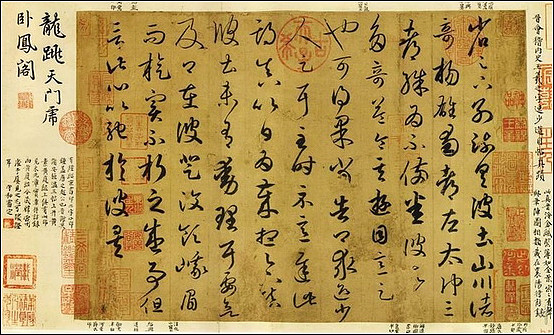
7. About the path of learning books
1. The creation of calligraphy requires a long-term process of accumulation, selection, integration, refinement and sublimation. What to learn, what to take, what to give up, how to refine and sublimate what you have learned, and finally how to forge your own calligraphy language, all need to be carefully considered and studied, and explored in practice. The most taboo thing is not having a backbone, making random strokes here and there, and feeling confused. In the end, you can only wander outside the hall of calligraphy. The general experience is to first find a classic Dharma script (no matter what style of writing) that suits your personality and that you like very much, study it carefully, and become proficient in the family's Dharma, which is the so-called "establishing roots." With this foundation, when you dabble in hundreds of companies in the future, you will have a clear direction for your choices. Only by knowing how to take and give up can we refine. With this process, we will gradually mature.
2. The purpose of copying is that "those who observe are more refined, those who imitate are more valuable" is to completely change one's writing habits (some of which have become habits), and develop the good habit of "the pen does not move in vain, and the writing has a reason". Really learn the good things from ancient posts. In this way, with the accumulation of practice, you can learn the techniques and connotations contained in many classic copybooks to enrich yourself, and you will have the "internal skills" necessary to enter the art of calligraphy.
3. Learn the classic works of classic authors and learn good things that have been tested by history and are generally accepted as acceptable methods. For good templates, you should copy them with your hands and understand them with your heart, and you should think deeply about them, so that you can truly understand the wonderful way. You will naturally know the quality of other posts and even fake ones, and then choose the good ones and follow them. You should also read more books and articles on the basic theory of calligraphy, and study more ancient calligraphy and fine works by modern famous artists. You will gain a lot and improve quickly.
